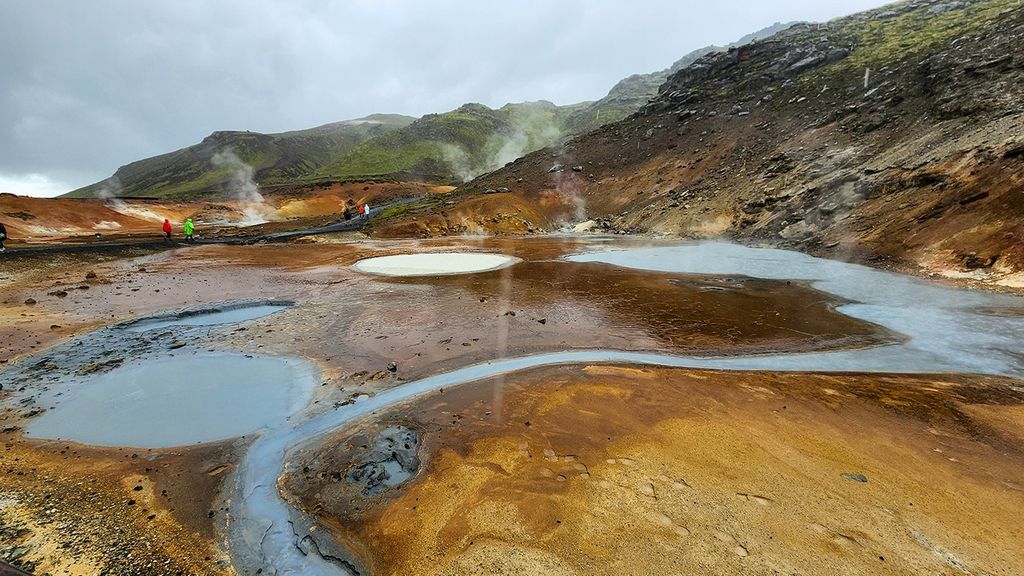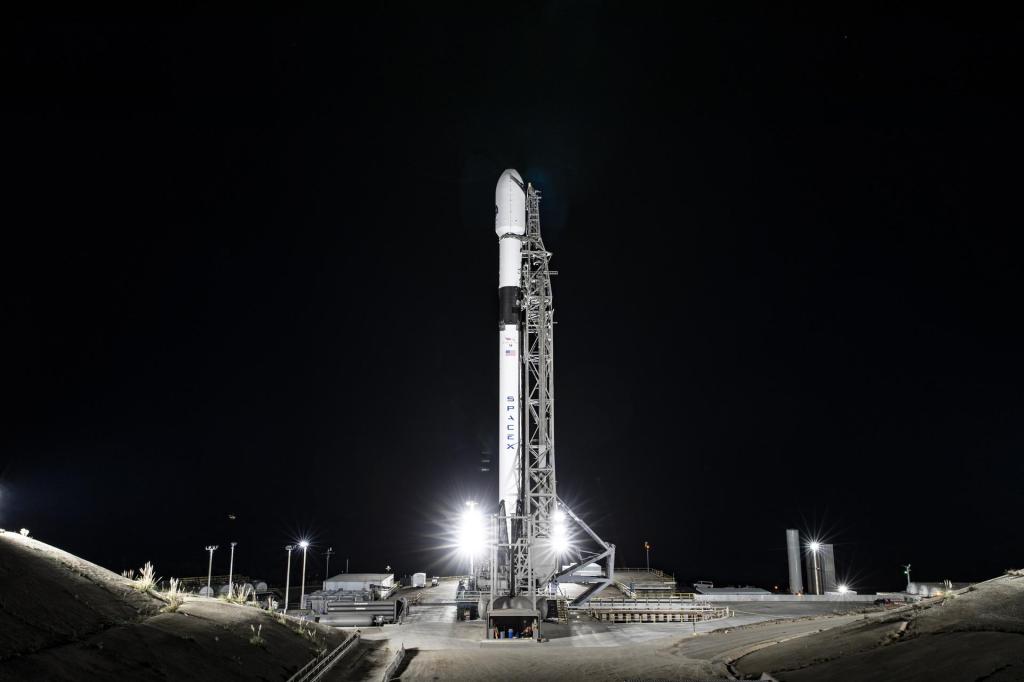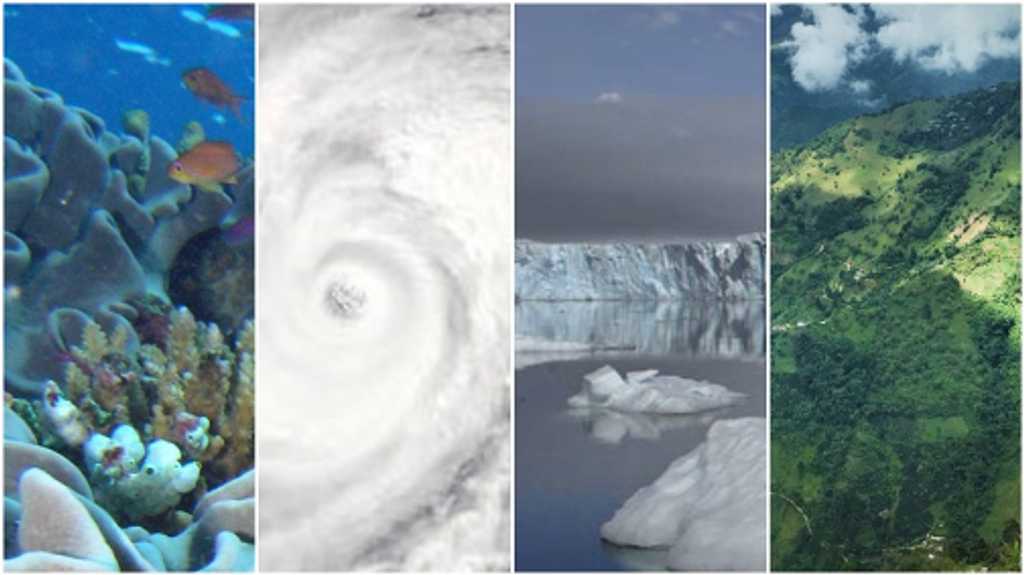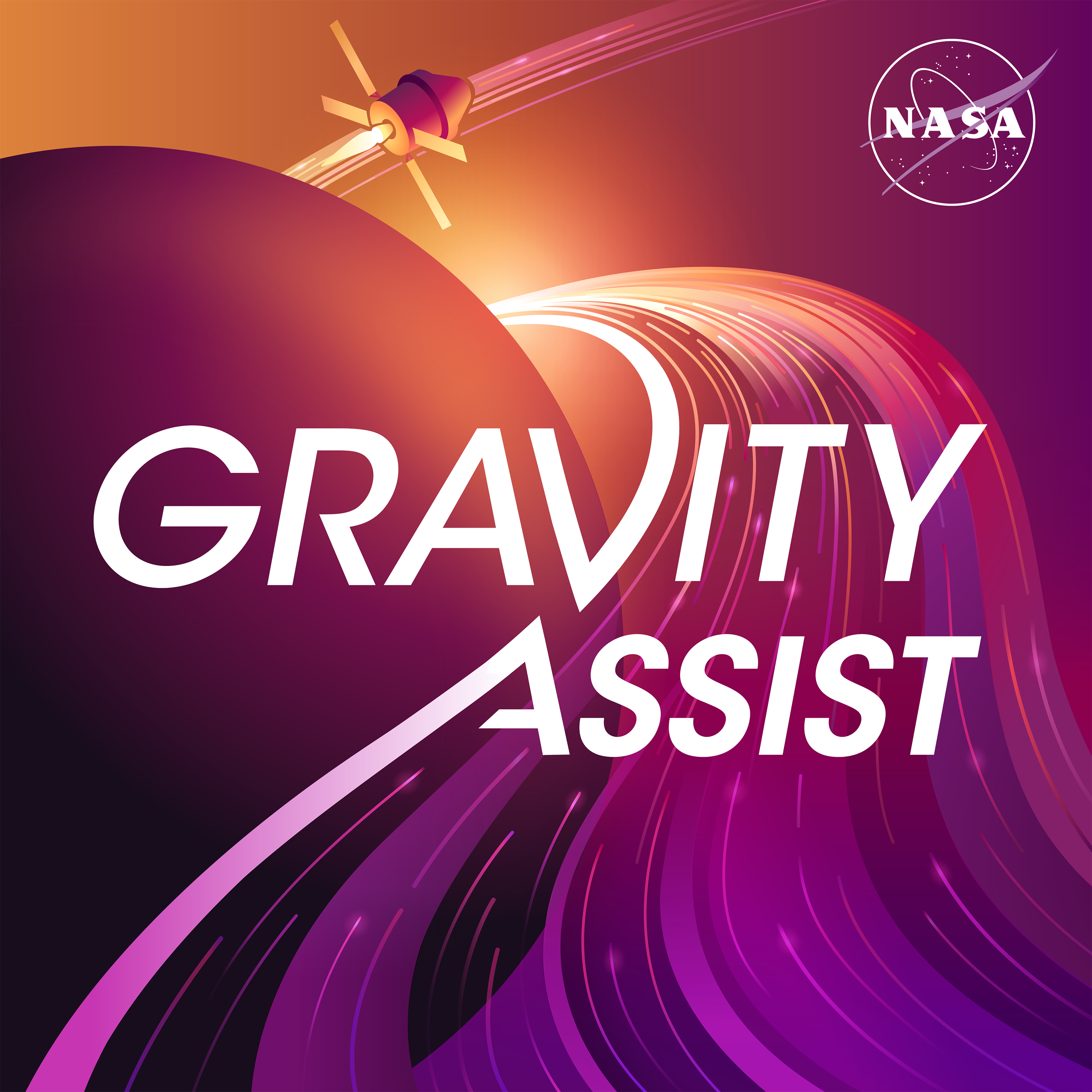
With two microphones aboard the Perseverance rover, we can listen to Mars from its surface like never before. In addition to hearing how wind sounds on Mars, we can also listen to Perseverance driving on the surface, the Ingenuity helicopter flying nearby, and more. Nina Lanza of Los Alamos National Laboratory plays some of these sounds and explains why these awe-inspiring sounds also have scientific and engineering value.
Jim Green:What does Mars sound like?
Nina Lanza:We’ve had these beautiful panoramic images of Mars for a long time. But now to add that sound, it really just makes me feel that much closer to standing on the surface.
Jim Green:Hi, I’m Jim Green, and this Gravity Assist, NASA’s interplanetary talk show. We’re going to explore the inside workings of NASA and meet fascinating people who make space missions happen.
Jim Green:I’m here with Dr. Nina Lanza. And she is the team lead for space and planetary exploration in space and remote sensing organization at the Los Alamos laboratory in New Mexico. She is the principal investigator for the ChemCam instrument aboard the Curiosity rover, and a science team member for the SuperCam instrument on the Perseverance rover. Welcome, Nina, to Gravity Assist.
Nina Lanza:Thanks, Jim. I’m excited to be here.
Jim Green: Well, first, what I want to do is hear a little bit about these fantastic instruments you work on.
Jim Green:Curiosity’s got 10 instruments. And when I started at NASA Headquarters, it was moving to a key decision point. And we selected this beautiful instrument called ChemCam. Tell us about the ChemCam instrument.
Nina Lanza:Well, sure. Yeah. So, you know, when ChemCam was actually selected, I’m the second PI, I was only a graduate student. And I actually started working on the project essentially right after the selection. So I was able to see this project through this entire time, which has been an incredible learning experience for me.
Nina Lanza:So its name is short for “chemistry and camera.” So as you might imagine, we do both chemistry measurements and we take pictures. So our main chemistry technique is called laser induced breakdown spectroscopy, or LIBS, L-I-B-S. And the way this works simply is that you can focus a laser at a target at a distance from the rover of up to 7 meters, so about 23 feet. So you don’t have to touch a sample. And you vaporize just the little materials. So you’re actually heating that up so hot that it turns into a vapor, and that plasma emits light, and you can look at the color of that light back on the rover. And that will tell you what elements are in that rock.
Jim Green: Yeah, it’s really fantastic, the concept of taking a laser and beaming it on a rock and vaporizing it.
Jim Green:Well, what’s been some of your favorite results from ChemCam?
Nina Lanza:There are so many good results. And it’s been 10 years, so there’s so many good ones, you know. I mean, I think the biggest one was really our first result, where we figured out that the soils on Mars are hydrated. They have water in them. And that’s an amazing result. People always ask, “Well, where did all that water on Mars go?” And I tell them, “It’s still there. It’s there right now, it’s just not in a form that we tend to recognize.”
Nina Lanza:There are previous missions that, you know, using remote sensing, orbiting spacecraft instruments, you know, we could tell that there were hydrated signatures. And some of those signatures made sense with the context, but others just really didn’t. Or like, what’s hydrated there? And the answer is: the dust, and the dust is everywhere. Dust is ubiquitous on the surface of Mars. So that was a really incredible results that really answered some outstanding questions we had about Mars for a long time.
Nina Lanza:You know, we’ve just learned so much about Mars in these 10 years. I think ChemCam has about 900,000 individual spectra. So that’s 900,000 laser shots. I mean, that’s a crazy amount of data. And I’m sure there are many PhD theses waiting to be written, right? We have barely scratched the surface of what those data can tell us.
Jim Green: Yeah, that’s fantastic. And I know Curiosity is still very healthy and going strong. Well, I want to switch gears a little bit and talk about another spectacular rover on the surface of Mars. And that’s Perseverance.
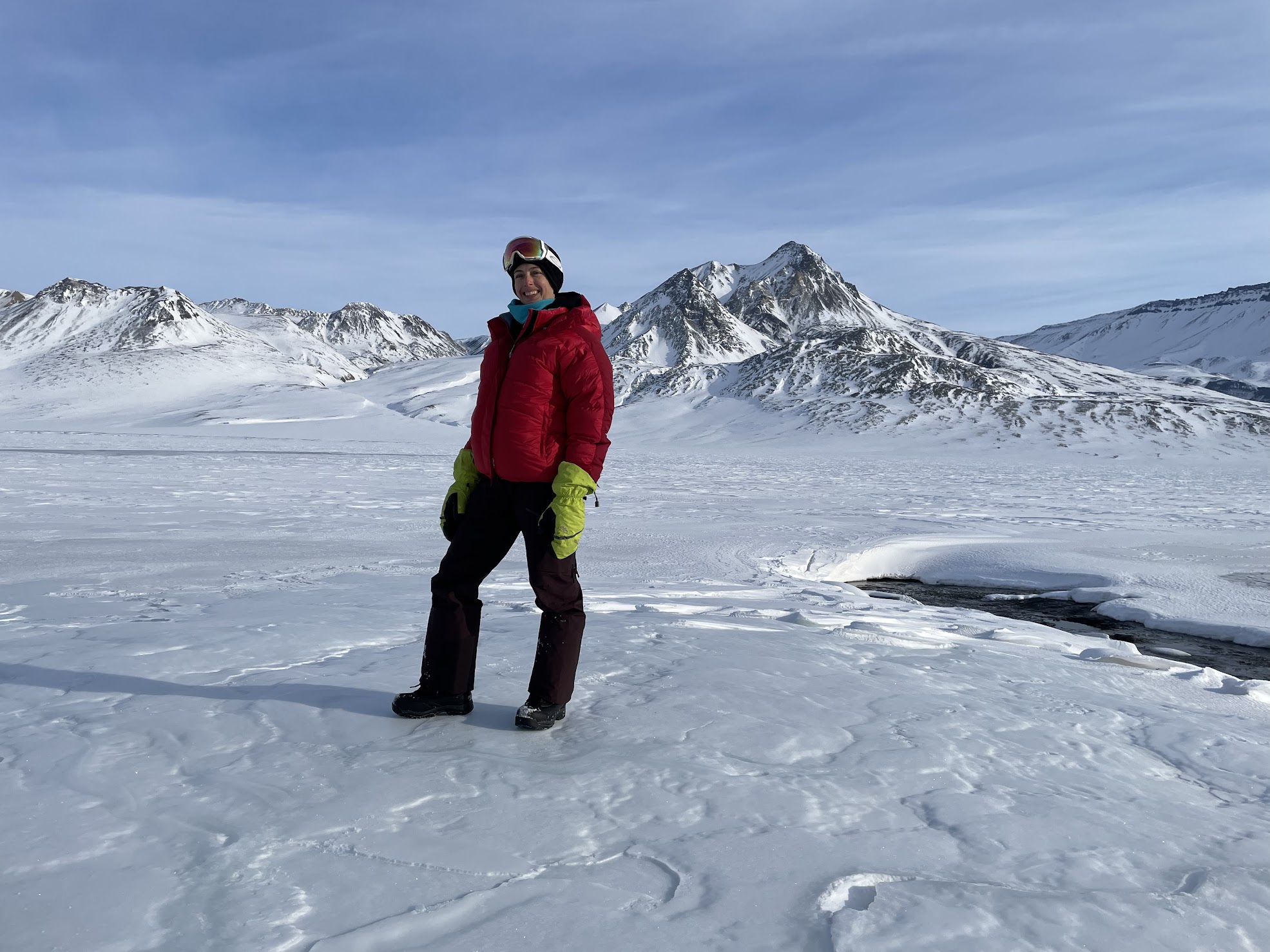
Jim Green:You know, the landing site of Curiosity is this big crater, Gale Crater, and another crater Jezero Crater, is where Perseverance is. Are they close? Or are they far apart?
Nina Lanza: Well, they’re not that close, you know, on Mars. And people always think they look close, because they look at a map, but that’s thousands of kilometers away. So we’re just going to wave our robotic arms at each other, we’ll never go and visit. But these craters are actually very similar in a lot of ways because they both represent similar aged craters that were probably filled with liquid water. They represent this time on Mars’s history where water appears to have been abundant. And so we have these lakes. So they give us these two different views of what lakes on Mars were like.
Jim Green:The way I think about it, too, in terms of how far apart they are, is: when the Sun is going down with Curiosity, it’s overhead at Perseverance.
Nina Lanza: That’s a great way to look at it. You know, I actually hadn’t thought about the time zone change, you know. But of course, they are in different time zones. I love that.
Jim Green:You know, I was head of the [NASA] Planetary Science Division when we landed Curiosity. And then we immediately started to get the approval process together for the next big rover. And that ended up being Perseverance. Well, we finally created a package of seven fabulous instruments, several from other countries. And one of these instruments is the SuperCam instrument. So can you tell us a little bit about SuperCam?
Nina Lanza:Of course, yes, so SuperCam is really the sister instrument of ChemCam. And thank you for bringing up that, you know, this is really an international effort. So ChemCam is actually a joint project between the US and France. And so now, SuperCam continues that really strong collaboration with France. And we’ve actually added some Spanish collaborators as well. So I think it’s really important to note, you know, we don’t do these things necessarily alone. This is really a team effort.
Nina Lanza:SuperCam has a lot of the same instrumentation techniques as ChemCam, but has a few extra tricks up her sleeve. So we continue to do the chemistry with the LIBS, laser-induced breakdown spectroscopy. We still zap rocks. But we’ve also added another laser technique called Raman spectroscopy.
Nina Lanza:Now, this laser doesn’t actually vaporize material; it scatters light off of molecular bonds. So you can actually figure out, with the same instrument, both chemistry — so what are the elements — and mineralogy — how are those elements arranged. And with those two pieces of information, you can actually uniquely identify geologic materials. So it’s really a very powerful combination of techniques.
Nina Lanza:And really excitingly we also added a microphone, which seems a little bit crazy, but it’s not. There’s a great science reason for it. We want it to listen to the sound of the LIBS laser as it vaporized material because it actually makes like a shockwave as that plasma expands. And you can learn a lot about a rock by listening to that.
Jim Green:Well, I tell you, the concept of having a microphone on Mars has been something I have wanted to do for many years. And I am so delighted we ended up with two on Perseverance. And indeed it really turned out to be science-driven, engineering-driven.
Jim Green:What really happened that really helped that argument of getting a microphone on Perseverance really started with Curiosity. As Curiosity was driving along, and it was going through a very rough area, and the rocks were so sharp, it was punching holes in the wheels, and we didn’t realize that. And of course, if you don’t have any wheels, you’re not going to go anywhere. And so the concept is, how are we going to determine this?
Jim Green:We needed additional sensor capability. And having some sort of microphone where we can hear the creeks and the cracks and, and try to understand what’s happening to the rover as a function of time was really going to be an important addition to it. And now Perseverance with these two microphones, [we] have the opportunity to really hear what’s going on on Mars. So how do these microphones work?
Nina Lanza:So both of these microphones and I know what it’s one is the entry, descent and landing, or EDL microphone, which is bolted to, I think, the lower left. and the SuperCam microphone, which is bolted to, essentially attached to the mast unit, which is, you know, the head of the rover. So they’re separate instruments. Both of them are really pretty straightforward. They’re pretty simple instruments, right, they’re not, they’re nothing fancy. They’re both really commercial off-the-shelf parts, which people are really shocked by, but microphones inherently are very simple instruments. They just essentially need to sense pressure. So they just need this membrane that will vibrate and turn that into an electrical signal.
Nina Lanza:They’re very simple, but they can actually tell you so much just about the environment. We can use them to do, you know, both science and engineering, right? So one of the things that SuperCam has been doing is, many times when we when the MOXIE instrument turns on — this is the in-situ oxygen generating experiment — you know, we’ll turn on our microphone to listen to the sound of their compressor, because actually listening to the compressor gives you a very good sense of how well it’s functioning.
Nina Lanza:So we can actually help them understand the state of their instrument’s health, just by listening to it, you know. And, of course, I think the EDL microphone has recorded the sounds of the, the wheels of Perseverance driving, which is a very unusual sound, but it also tells you that you can, you can hear that things are okay with those wheels, you don’t have to just rely on looking at them. You know, but then, of course, we can listen to the sounds around us of Mars, which is an amazing dimension to add. You know, we’ve had these beautiful panoramic images of Mars for a long time. But now to add that sound, it really just makes me feel like that much closer to standing on the surface.
Jim Green:Yeah, I know what you mean. I really wanted to have the microphones on all the time, bringing that data back, pumping it into my office.
Nina Lanza:(laughs)
Jim Green:So as I’m sitting there working, I can hear the sounds on Mars, that would be fantastic. And in fact, of course, at night on Mars, I wanted to hear the crickets.
Nina Lanza:(laughs)
Jim Green:Okay, so…(laugh) the pressure on Mars, you know, the atmosphere is so much different than here on Earth. It’s about a percent of our atmospheric pressure. And the composition is so much different because it’s dominated by carbon dioxide. So we expect these sounds to sound different than they would here on Earth. Were there any kind of surprises when you started to hear the sounds because of that?
Nina Lanza:Yes! When we thought about what would we expect to hear on Mars, we understand very well, the differences in the atmosphere between Earth and Mars. So we have some sense of how those sounds would be different. But of course, you know, models are great, and they really help us, but they are not observations. And so we really had to take observations to say, okay, are our models correct? And the answer was: no. (laughs) They were not correct. It turns out that sound actually propagates a lot more readily in the Martian atmosphere than our models suggested.
Nina Lanza:Before we even sent these microphones, some naysayers said, “Oh, you’ll never hear anything, you’ll never hear anything, there’s just no way sound can propagate.” And it turns out sound is propagating extremely well. So things are louder than we would have thought. Now, that being said, they’re quite quiet, you know, there’s not a lot of air molecules on Mars.
Nina Lanza:So its sounds are attenuated. But we can hear sounds much further away than we had predicted. And so it’s really meaning that these observations are allowing us to understand the Martian atmosphere and a whole new way that models never could have let us see.
Jim Green:Well, I know you’ve got a bunch of sound files, and I’m dying to hear them. So pick one and let’s listen to it and then talk about what we’re hearing.
Nina Lanza:Well, sure, let’s see. Maybe since we were just talking about sound propagation, let’s maybe listen to the sound of the helicopter, Ingenuity.
Jim Green:Okay, okay.
Jim Green:Well, that’s fantastic. And I mean, you know, when you think about it, Ingenuity is not really very close to the rover.
Nina Lanza:No!
Jim Green:We don’t want Ingenuity crashing into Perseverance. So it’s at least, you know, 50 meters away. So the ability to hear anything about what the helicopter is doing is really exciting. And as you said, it really gives us a great idea of how that sound is propagating even over long distances.
Nina Lanza:Exactly, you know, so our models predicted we would not be able to hear that sound more than 60 meters away. We heard it over 100 meters away, which is amazing. And what Ingenuity allows us to do is have a standard sound that we can, you know, put at a known distance from the rover. It’s like the perfect acoustic experiment.
Nina Lanza:You know, and of course, it wasn’t designed as that. But it really allowed us to do this project where we say, look, let’s get this sound. We understand exactly the, signal of those rotors, so we know where, and we know where it is, so that we can actually put that together to make and improve our models of attenuation in the Martian atmosphere. And it has worked beautifully. And again, we were shocked. We could hear this. In some ways, it’s [a] very mundane sound. We’ve all heard the sound of rotors, but that’s the first rotorcraft on another planet, which is amazing!
Jim Green:Yes, it really is amazing. I tell you. So you know, when we know a lot about the climate on Mars. We have a weather station from Spain, on both Perseverance and on Curiosity. And so we can measure the wind velocity, and the pressure and a number of things like that. And so, indeed, can we hear the wind on Mars?
Nina Lanza:We can. And you know, in many ways, it sounds like the wind on Earth, but in other ways it doesn’t. So maybe we can take a listen.
Jim Green:Yeah, let’s do that.
Jim Green:You know, that’s kind of like a windy day. Is it like that all the time that you turn it on? Is that kind of the background? Or can it be really quiet with no wind at times?
Nina Lanza:It’s incredibly variable. So it really depends on a lot of factors, you know, the season, the time of day, and just, you know, random perturbations in the atmosphere, right? So there are times of day on Mars that are louder and quieter. So that is probably a mid-day sound, right, where we have the most turbulence. So we hear that wind, which is a kind of a low frequency sound very similar to what we would hear on Earth. Now the difference, of course, is that you know, even though that wind, it sounds very similar, it doesn’t have the same force behind it because the atmosphere is so, so much less dense than Earth.
Nina Lanza:So you know, you hear it sounds like it’s a really strong wind, and it is for Mars. But if you were to stand out there and feel it, you probably would barely feel it on your skin. Of course, I don’t recommend standing on Mars without a spacesuit. So you shouldn’t do that experiment, but it’s a gentler winter than it sounds.
Jim Green:That’s incredibly fascinating. Well, what other sounds do you have on Mars? Can we hear the rover drive?
Nina Lanza:We can, and we’ve actually recorded that. And it’s a very weird sound as you’ll hear, because the rover doesn’t have nice squishy tires. It actually has metal wheels. And so you can actually hear that sound of that metal on the rocks in the soil and it’s kind of a little unnerving, I think. It sounds like something’s wrong, but of course, nothing is wrong. Everything’s fine. So maybe we’ll take a listen.
Jim Green:Yeah, it sounds like it’s creeping, crawling along. And then you know, stopping for a second or two and then creeping some more, and when you think about it, you know, Perseverance has got a heritage of intelligent software that’s really started with Spirit and Opportunity and then developed into what Curiosity is using and that means, we tell it where it wants you to be at a certain location, and you figure out how to get there. And so it’s got to take pictures, it’s got to do some analysis in and in having it creeped along.
Nina Lanza:It’s amazing, right? The rover can just decide, hey, you know, I don’t want to drive straight from point A to B, I need to make a little turn here for my own safety, which is remarkable, right? It’s amazing that that we have built a machine that can make those kinds of decisions.
Jim Green:Yeah, I hope from now on every time we go to Mars, we take a microphone. I’m really hoping that that will be a main part of our infrastructure. I think it’s just so essential. Now, are there any other scientific insights that we’re learning from the sound recordings?
Nina Lanza:Oh yes, well, maybe I can play you one more sound, my favorite sound,
Jim Green:Okay!
Nina Lanza:…which is of course the SuperCam lasers zapping that’s the one that I listened to the most, because that’s what I’m using to study rocks. So what this sound is, essentially, is that when you shoot the laser at a rock, it’s at a distance from the rover. So then you make this plasma, the shockwave that makes a snapping sound, that snapping sound, then vibrates through the air and travels back to the microphone on the mast. And so you can actually hear this at a distance. It’s a very small thing, but we can hear it very clearly. So maybe we’ll take a listen.
Jim Green:Now, what we heard, you know, are the individual beams. But it was for only one hole, right? We didn’t go to the next hole? So we’re really burning that one hole in the rock.
Nina Lanza:Exactly right. So this is just, you could hear its 3 hertz cycle. So it’s not that fast. And each time you hear that snap, you vaporize just a little more material in the same hole. We’re drilling down into the surface of a rock, but you know, only a few microns, but that’s what you’re hearing.
Jim Green:Wow, that’s fantastic.
Jim Green:What’s next up for both Curiosity and Perseverance and their instruments?
Nina Lanza:Oh my goodness, so much. It’s such a great time to be a Mars scientist! You know, there are so many things going on. So for Curiosity, of course, we’re continuing our ascent of Mount Sharp, and we’re continuing to explore unexplored terrains. And so we’re going to go through this transitional period to understand you know, how do the lakes end up drying up in in Gale Crater? And so, you know, I’m really looking forward just to continuing to see, you know, this progression. In Jezero crater, you know, I am so excited about sample return.
Nina Lanza:So one of the things that Perseverance is doing, it’s actually not only a standalone science mission, it’s also collecting samples to return to Earth in a future sample return mission. And so one of the most exciting things that we do is to select samples to return to Earth. And these are going to be samples that are going to be in our laboratories within the next 10 years. It’s so exciting, it’s going to change everything. So for me, that’s one of the most exciting aspects of Perseverance. And of course, we’re on right now, in this beautiful delta, which is a deposit made by flowing water.
Nina Lanza:And so all of us on the team, like, really want a piece of that delta. That’s like the most exciting sample I can think of, you know, from Mars. So, you know, we’re going to be able to take those samples. And of course, we’re going to have to be patient and wait for them to come back. But we know they’re coming back.
Jim Green:Well, Nina, I always like to ask my guests to tell me that person, place or event, or thing that happened to him that got them so excited about getting in the sciences and being the scientists they are today. And I call that event a gravity assist. So Nina, what was your gravity assist?
Nina Lanza:Well, when I was seven years old, my parents took me to an open observing night at a local university to see Halley’s Comet. And so this was, you know, this a comet, a short period comet that comes back every about 76 years. So it was a really a big event. I didn’t know anything about space. So there was a lecture before the observing. And I admit that I don’t remember anything about that. But when we went out onto the roof, and I looked through that telescope, I was shocked to see something that looked so, just, real, something that I had never seen before.
Nina Lanza:And I realized at that moment, that the sky was not a dome. The sky is three-dimensional space and who knows what’s out there! And for me, that was just a pivotal moment. I realized there was nothing more interesting or exciting to me than figuring out what was out there. And so I have really pursued that for the rest of my life. I had no idea, of course, when I was seven, how to do that or what that really meant, but that that sparked this lifelong fascination with space that I carry with me today.
Jim Green:That’s great. Well, Nina, thanks so much for telling me about the science and the sounds of Mars.
Nina Lanza:Thank you so much for having me. I love chatting about this stuff. And thank you so much for, for helping us get there!
Jim Green:My pleasure.
Jim Green: Well join me next time as we continue our journey to look under the hood at NASA to see how we do what we do. I’m Jim Green, and this is your Gravity Assist.
Credits
Lead producer: Elizabeth Landau
Audio engineer: Manny Cooper








